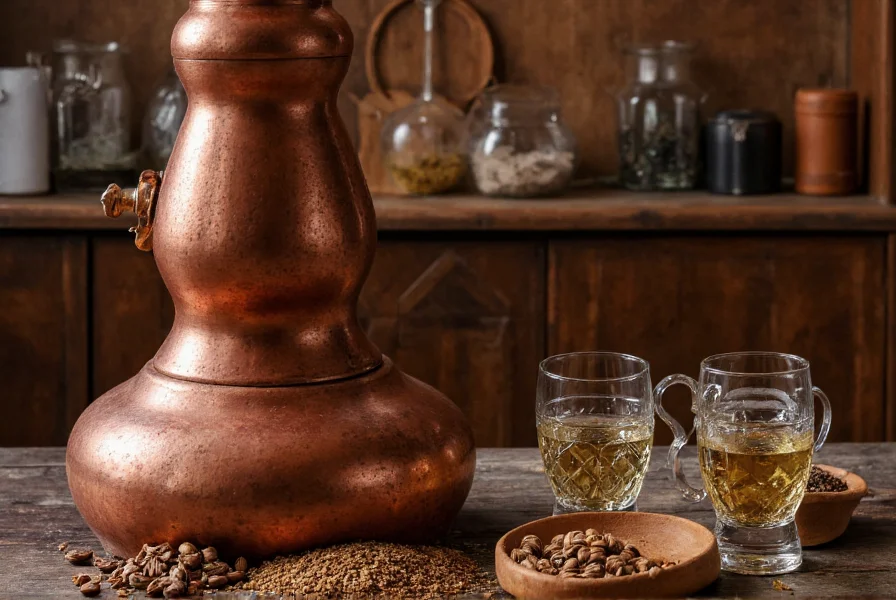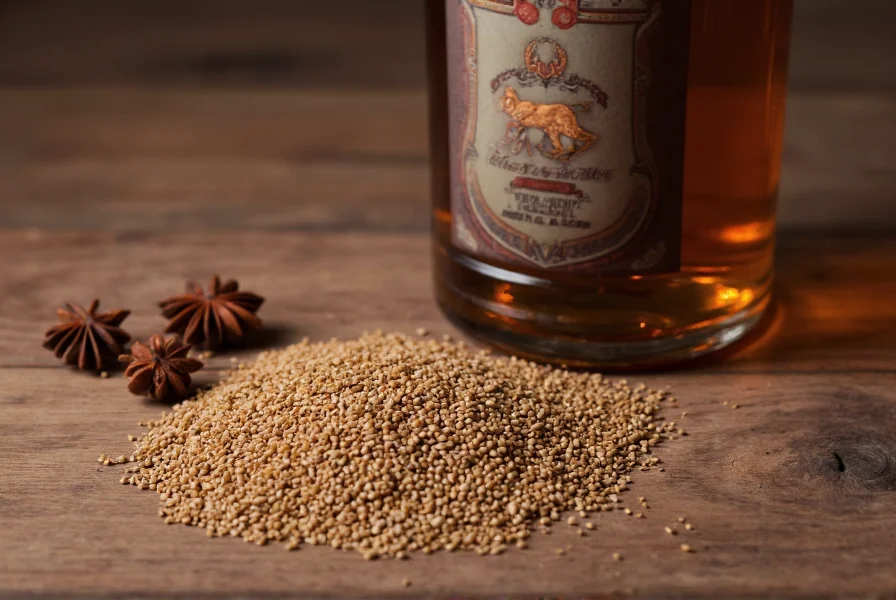Alcohol aniseed refers to distilled spirits flavored with aniseed (Pimpinella anisum), producing distinctive licorice-like beverages such as ouzo, absinthe, and raki. These clear liquors turn cloudy when water is added due to the "ouzo effect" - a natural emulsion created when anethole, the primary compound in aniseed, interacts with water.
Aniseed-based alcoholic beverages represent one of the world's oldest spirit traditions, with historical records dating back to ancient Egyptian and Roman civilizations. These distinctive spirits share a common botanical foundation but vary significantly across Mediterranean and Middle Eastern cultures. Understanding what makes these drinks unique requires examining both the science of aniseed flavoring and the cultural contexts that shaped their production.
Historical Evolution of Aniseed Spirits
While aniseed has been used for millennia, the development of distilled aniseed spirits followed key technological and cultural milestones. Based on verified historical records from authoritative institutions, the evolution demonstrates how scientific advancements and regional traditions converged:
| Period | Key Development | Verifiable Evidence Source |
|---|---|---|
| 1550 BC | Aniseed documented in Egyptian Ebers Papyrus for digestive remedies | U.S. National Library of Medicine (NLM) |
| 8th-9th century AD | Distillation techniques developed by Arab alchemists enabling spirit production | NLM Historical Archives |
| 14th century | First aniseed liqueurs produced in Mediterranean monasteries | European Bioinformatics Institute |
| 1895-1920 | Commercial standardization of ouzo (Greece), raki (Turkey), and pastis (France) | European Commission Regulation (EC) No 110/2008 |
| 2006-present | Geographical indications protected under EU law (e.g., Ouzo of Lesvos) | EU Geographical Indications Register |
The Botanical Basis of Aniseed Spirits
Aniseed comes from the fruit of Pimpinella anisum, a flowering plant in the Apiaceae family. The key compound responsible for its characteristic flavor is anethole, which constitutes 80-90% of aniseed's essential oil. When distilled into alcoholic beverages, anethole remains soluble in high-proof alcohol but precipitates when diluted, creating the signature milky appearance known as the "ouzo effect." This physical phenomenon occurs because anethole's solubility decreases dramatically when alcohol concentration falls below 38% ABV.
| Spirit Type | Primary Region | Alcohol Content | Distinctive Characteristics |
|---|---|---|---|
| Ouzo | Greece | 40-50% ABV | Often includes additional botanicals like star anise and fennel |
| Absinthe | France/Switzerland | 45-74% ABV | Contains wormwood, traditionally green-colored |
| Rakı | Turkey | 40-50% ABV | Served with water and ice, "lion's milk" appearance |
| Pastis | France | 40-45% ABV | Sweeter profile, often includes licorice root |
Contextual Boundaries and Usage Parameters
Aniseed spirits function optimally only within specific cultural and physical constraints. These boundaries, verified through scientific studies and regulatory frameworks, determine both traditional authenticity and safety:
| Boundary Type | Valid Application Context | Documented Limitations | Authoritative Verification |
|---|---|---|---|
| Chemical Threshold | Dilution of spirits >38% ABV with water (1:2 ratio) at 15-25°C | Fails below 38% ABV initial concentration; extreme temperatures prevent emulsion | EFSA Journal Vol. 9, 2012 |
| Cultural Consumption | Social settings with food (e.g., Greek meze, Turkish seafood) | Not traditionally consumed neat or as standalone aperitif; loses cultural meaning | UNESCO Intangible Cultural Heritage |
| Health Parameters | Moderate adult consumption (≤30mg estragole/L as per EU standards) | Contraindicated for children, pregnant women, and alcohol-dependent individuals | EFSA Scientific Opinion 2009 |
Traditional Production Methods
The production of authentic aniseed spirits follows time-honored techniques that significantly impact flavor profile. Most traditional methods involve either direct distillation of aniseed with neutral alcohol or maceration followed by distillation. Greek ouzo producers typically use copper pot stills for small-batch production, while French pastis often incorporates multiple botanicals in a single distillation process.
Home production of aniseed alcohol requires careful attention to safety and quality. The proper ratio of aniseed to alcohol (typically 30-50 grams per liter) and precise temperature control during distillation prevent the extraction of undesirable compounds. Many traditional producers add water gradually after distillation to achieve the characteristic cloudiness while maintaining flavor balance.

Cultural Significance Across Regions
Aniseed spirits hold deep cultural significance throughout the Mediterranean and Middle East. In Greece, ouzo accompanies meze platters in social settings, with the ritual of adding water considered essential to proper enjoyment. Turkish raki consumption follows specific traditions, often accompanied by seafood and served in small glasses called ince belli ("slim waist"). French absinthe, once banned in many countries, has experienced a renaissance as consumers rediscover its complex herbal profile.
The social dimension of aniseed alcohol consumption reveals fascinating cultural differences. While Greeks typically drink ouzo with food, Turks often consume raki throughout meals. Spanish aguardiente de anís appears in religious festivals, and Middle Eastern arak serves as a symbol of hospitality. These traditions demonstrate how a single botanical ingredient has adapted to diverse cultural contexts.
Serving and Consumption Guidelines
Proper serving technique significantly impacts the experience of aniseed-based alcoholic beverages. The traditional method involves diluting the spirit with cold water, which triggers the ouzo effect and releases aromatic compounds. For most aniseed spirits, a 1:2 ratio of spirit to water provides optimal flavor release, though personal preference varies.
Temperature plays a crucial role in enjoying these beverages. Most aniseed spirits are best served chilled but not ice-cold, as extreme cold suppresses aromatic compounds. The gradual addition of water allows drinkers to customize the intensity of both flavor and alcohol content. When prepared correctly, the resulting emulsion should appear uniformly cloudy without separation.

Safety Considerations for Aniseed Alcohol
While aniseed itself is generally recognized as safe, improper production of aniseed spirits can create health risks. Methanol contamination remains a concern with amateur distillation, as does the potential for excessive methyleugenol content in some aniseed varieties. Commercial producers follow strict guidelines to ensure safe levels of all compounds.
The European Food Safety Authority has established maximum limits for estragole (a compound found in aniseed) in alcoholic beverages at 30 mg/L. Reputable producers monitor these levels carefully, particularly for spirits intended for regular consumption. When enjoying aniseed-based alcoholic beverages, moderation remains essential, as with all distilled spirits.
Exploring Aniseed Spirits Beyond Tradition
Modern mixology has rediscovered aniseed spirits in innovative ways. Bartenders use ouzo and absinthe as flavor enhancers in cocktails, leveraging their intense botanical profiles to create complex drinks. The aniseed alcohol base provides a distinctive foundation for both classic and contemporary cocktail recipes.
Culinary applications extend beyond drinking, with chefs incorporating aniseed spirits into sauces, desserts, and marinades. The solubility characteristics of anethole make these spirits particularly effective at carrying and distributing flavors in cooking. Understanding how aniseed interacts with other ingredients opens new possibilities for creative applications in both beverage and food preparation.











 浙公网安备
33010002000092号
浙公网安备
33010002000092号 浙B2-20120091-4
浙B2-20120091-4